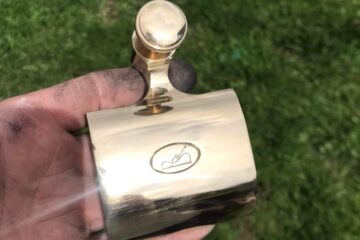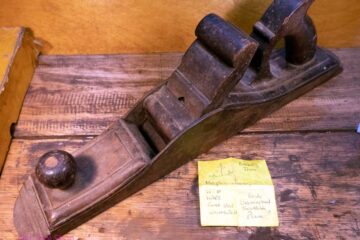
On a recent trip I visited the Wooden Boat Centre located in Franklin, Tasmania where for the past 30 years, they’ve been producing a range of beautiful timber boats. The timber boats are crafted by hand on the banks of the Huon River using local timbers and traditional methods.
They run guided tours around their workshop, so I signed up, paid a couple of dollars and eagerly awaited my turn. The tour is well worthwhile. I loved every minute of it, certainly got my monies worth and I also picked up a trick or two.
What does the Centre do?
Apart from building boats, running tours and running a bustling little gift shop they also provide training. Training courses range from basic woodworking skills up to shipwright qualifications. Some of the trainees are there for extended periods at a time and actually build their own boats as part of their training.
Boat building methodology
All the timbers are prepared using basic modern machinery: saw tables, bandsaws, jointers and planers and the like. But the actual assembly relies mostly on hand tools. Things have to be cut and adjusted to fit and that takes hand tools. It’s incredibly hard to try and machine a piece of wood the exactly the right size and then chuck it in a steam box, bend it around a former and then hope it fits perfectly. It all needs finessing to make it work and that’s all done with hand tools.
To hold all the timbers together it’s a mixture of traditional joints and copper rivets (or roves) which are pre-drilled, the copper nail is hammered through the hole and then a domed cap with a hole in goes over the nail and the head of the nail is hammered until the dome is retained. All very ingenious and looks great on the finished boats.
I was particularly fascinated by the steaming methods they use. They had several steam boxes of a type I’d seen before. I would like to make one myself, but it would take up too much room in my shop. Luckily they had just the solution – a steam bag. A purpose-built treated canvas bag with all the fittings to connect it straight to the commercial wallpaper steamer. Genius! A bag takes up almost no room when not in use and can be folded over for smaller items. Now I just need to source one.
The hand tools
I expected to see a raft of well used top quality tools, but in truth most of what I saw was plastic handled old Stanley planes. There were a few nice Veritas shoulder planes, but that was it. I also caught glimpses of some rather nice toolboxes and the tools inside which were personally owned by the staff and trainees. I suspect most of the good tools were safely tucked in those boxes and all the Centre owned tools were the ones on the benches. If it was my toolbox, that’s what I’d do.
There was a good selection of nice old wooden planes on display around the Centre, but sadly they appeared to be dust covered and rarely, if ever, used.
The Centre often gets gifted tools by retired trades people wanting their tools to be loved and put to good use. They have so many that they tend to sell them, but there are plans to set up a tool museum using some of the old tools that are no longer in use, which would be worth returning for.
The timbers
These boats are famous for being made from Huon pine although sometimes the boat builders use other timbers too such as the rarer King Billy pine. Huon pine was favoured by boat builders because it is an incredibly slow growing, straight grained and doesn’t rot in water. Huon pine which isn’t actually a pine species, but a conifer which is rich in oils. The oils help protect it from insects and rot. It also has a densely packed grain, however it is relatively soft compared to other dense timbers so makes it relatively easy to work.
Historically, the Huon Pine which was favoured for building boats and was over harvested. It is now a protected species with all logging band and so it’s very hard to source. Instead, the timbers come from trees often felled more than a century ago. At the time the trees were felled they were floated down the river from the felling sites. Invariably trees were lost or got caught under riverbanks. During heavy rainfalls these trapped trees are often washed out and collected for their prized timber. Due to their nature, even after 100 years submerged the timbers are as good as the day they were cut down.
Worth a visit?
I would whole heartedly recommend a visit. Their work is both beautiful and fascinating. It would be best to visit when it’s at its quietest so that your tour has plenty of time for questions (which I had rather a lot of – it might just be me). The guide was knowledgeable, enthusiastic and engaging so the next time you are anywhere near Franklin, Tasmania drop in and say hi.



0 Comments